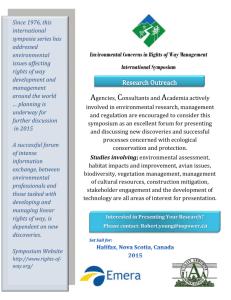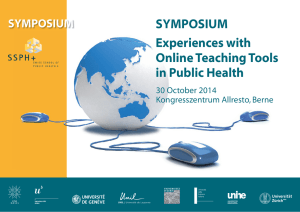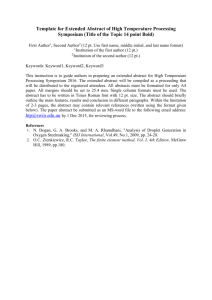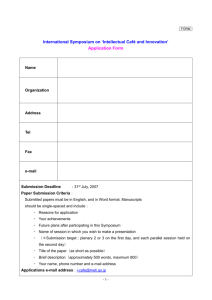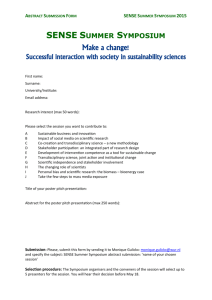Airline Industry Data Model
advertisement
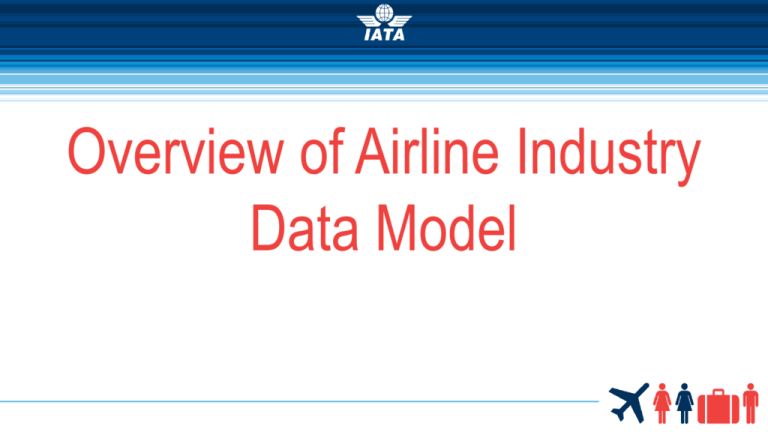
Overview of Airline Industry Data Model World Financial Symposium 2014 World Financial Symposium 2014 Evolution of data exchange standards Paper Examples: Loadsheet, Paper Ticket World Financial Symposium 2014 Baggage operations, Reservations Examples: Teletype EDIFACT Examples: Ticketing, Reservations, PNRGOV XML … World Financial Symposium 2014 Examples: Airline shopping, ticketing, flight information Current challenges Demand for new messages is growing Current manually intensive message-by-message development approach cannot keep up with the growing demand for industry standard messages, it is not fast enough Data definitions in industry systems are2014 inconsistent World Financial Symposium Same term has different meanings in different systems and standards Multiple terms are used to describe the same concept in systems or standards Lack of computer-readable industry reference for data definitions and their relationships Can’t easily align/integrate standards with industries already adopting model-driven approach For example, air traffic managers are investing heavily in the development of new information exchange models and find it difficult to reflect in their models the concepts from established airline standards published in free text format. World Financial Symposium 2014 Airline Industry Data Model Messaging Standards & Documentation Business Requirements Business Glossary World Financial Symposium 2014 Industry-agreed vocabulary Data Requirements Business Processes IATA Airline Industry Data Model World Financial Symposium 2014 Data Dictionary Object Library Message Schemas Use cases Free text, drawings Business Process Diagrams Structured & re-usable data Web Service Definitions Accessing the AIDM AIDM Methodology Wiki on PADIS Extranet site AIDM Overview and Key Concepts World Complete guidelines Financial Symposium 2014 Full model for viewing/downloads • • • XMI file EA file Navigable Web pages Expert users work directly in the Cloud using Enterprise Architect World Financial Symposium 2014 Strong Project Methodology Stage 1 Project Initiation World Financial Stage 2 Business Requirements & Modeling Symposium Stage 3 2014 Logical & Physical Modeling Stage 4 Stage 5 Schema Generation & Validation Implementation iterations iterations Business understanding World Financial Symposium 2014 Technical skills Benefits Increased consistency of definitions and format Enforcing strong methodology ensures that all data is modeled according to the same rules. Concentrating all industry data definitions in one repository accessible to all promotes re-use and increases the consistency of resulting standards. World Financial Symposium Faster development of new standards 2014 Re-using existing industry definitions, data and process models speeds up the development of new standards as well as modifications of existing standards. Streamlined deployment of new standards Standards developed using the same methodology and the same data repository are consistent. Users need to learn only once and then apply the same knowledge in multiple deployments.. Breaking down of silos Integrated data model gives visibility across business areas and the possibility of re-use motivates the users to collaborate and maintain common views and structure across business areas. World Financial Symposium 2014 Where are we? Architecture defined Methodology and templates in place World AIDMFinancial repository Symposium in place 2014 Passenger and flight core object models released (AIDM Initial Release) First message development projects using the repository and methodology (Baggage XML, One Order) World Financial Symposium 2014 Systems Providers World Financial Symposium 2014 Airlines Business Partners Systems Providers World Financial Symposium 2014 Airline Industry Data Model (AIDM) Business Partners Airlines BENEFICIARIES CONTRIBUTORS Building, structuring and sharing the industry knowledge
